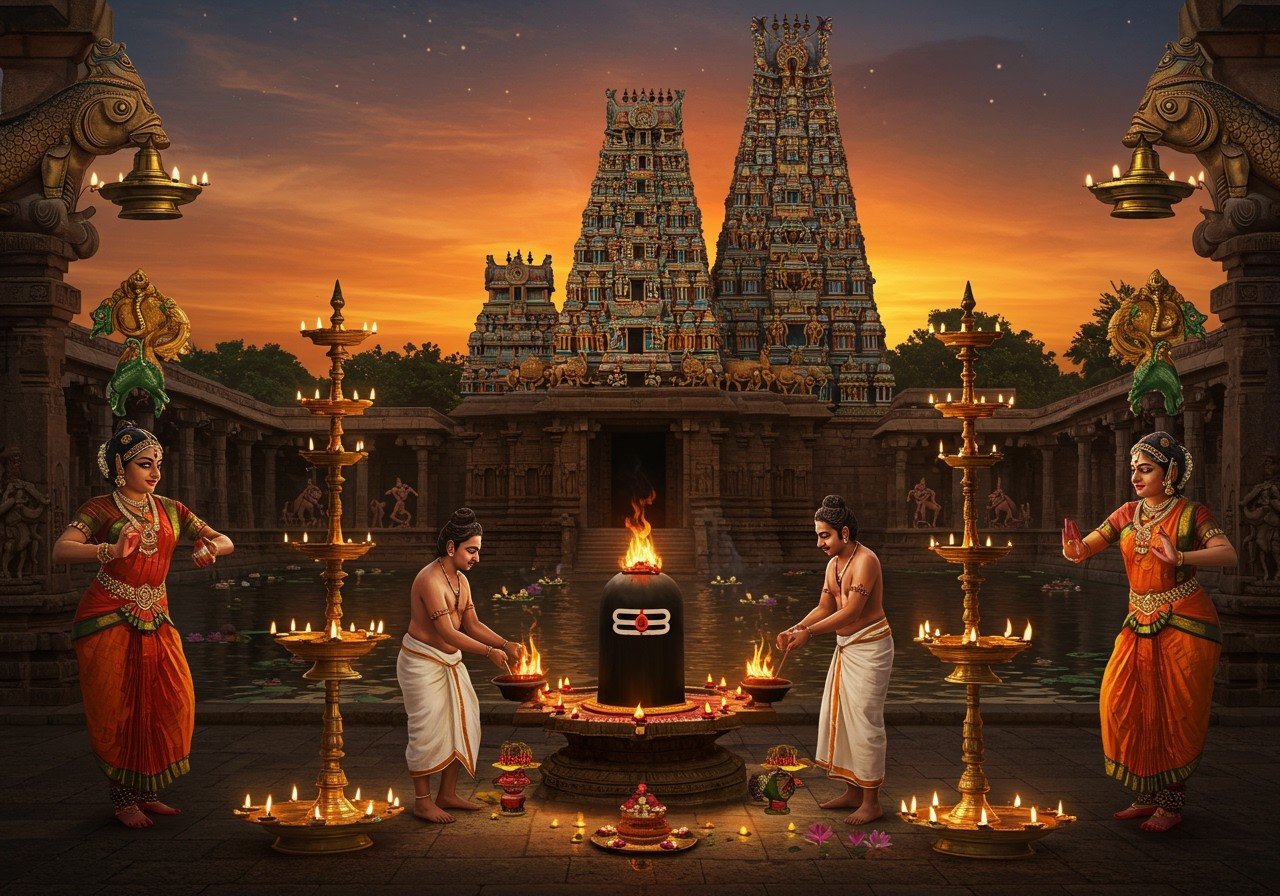
The Pandya Dynasty, a prominent ancient Tamil dynasty, reigned over South India from the 3rd century BCE to the 14th century CE, significantly shaping the region’s cultural and religious landscape. Known for their patronage of arts and religion, infrastructure development, and international trade, their legacy continues to resonate in Tamil culture and history. Notable rulers include Maravarman Sundara Pandya I and Jatavarman Sundara Pandya. This article delves into the rich cultural and religious practices of the Pandya Dynasty, offering a deeper understanding of their contributions to Indian heritage.
Historical Overview of the Pandya Dynasty
The Pandya Dynasty’s roots trace back to the Sangam Age, with their reign extending across present-day Tamil Nadu, Kerala, and parts of Andhra Pradesh. Key figures like King Nedunjeliyan and Queen Mangamma left indelible marks on the dynasty’s history. Flourishing trade connections with the Roman Empire and Southeast Asia contributed to their economic prosperity. Sangam literature offers valuable insights into their societal structure, while political alliances and conflicts with neighboring dynasties like the Cholas and Cheras shaped their political landscape. The dynasty eventually declined and became part of the Vijayanagara Empire.
The Pandya Social Structure: The Caste System
During the Pandya reign, the caste system played a significant role in social organization. Here’s a glimpse into the hierarchical structure:
- Brahmins: Held considerable influence in religious and administrative matters, playing a crucial role in temple rituals and education. They were considered the highest caste and enjoyed privileges related to religious practices.
- Kshatriyas: Comprised the ruling family and warriors, responsible for governance and military campaigns. They maintained law and order, defended the kingdom, and expanded its territories.
- Vaishyas: Engaged in trade and commerce, contributing significantly to the economic prosperity of the kingdom. Their mercantile activities fostered trade relations with distant lands.
- Shudras: Involved in agriculture, crafts, and other essential services that supported the foundation of society. Their labor provided sustenance and essential goods for the entire population.
While the system had a rigid structure, some social mobility existed, allowing for merit-based advancement. The Pandya caste system also displayed unique characteristics that distinguished it from other contemporary dynasties.
Religious Practices and Deities of the Pandya Kingdom
Lord Shiva and Goddess Meenakshi were the primary deities worshipped by the Pandyas, with the Madurai Meenakshi Amman Temple serving as a major religious and cultural hub. Local deities and folk traditions were also integrated into mainstream worship. Influences from Jainism and Buddhism were evident during various periods, reflecting the dynasty’s religious diversity. Temple festivals and rituals played a vital role in daily life, with Pandya kings extending patronage to temples, ensuring their maintenance and expansion. Temple priests oversaw rituals and temple administration.
Architectural Marvels and Cultural Contributions
Pandya temples showcased the distinctive Dravidian architectural style, characterized by intricate carvings, towering gopurams (gateway towers), and expansive courtyards. These temples, including the iconic Meenakshi Amman Temple in Madurai and the Nellaiappar Temple in Tirunelveli, stand as testaments to the dynasty’s religious fervor and artistic excellence. Beyond temples, their architectural prowess extended to palaces and public structures. The Pandyas were also renowned patrons of classical Tamil literature, music, and arts, fostering a vibrant cultural scene. Their architectural influence is visible in subsequent South Indian temple constructions.
Explore Chalukya Dynasty Architecture.
Learn about the Bhoganandishwara Temple.
Festivals and Rituals: A Tapestry of Tradition
The Chithirai Festival in Madurai, a major celebration from the Pandya period, continues to be observed today. This festival, with its vibrant processions, performances, and rituals, fosters community bonding and social cohesion. Unique rituals like abhishekam (ritual bathing) and aarti (waving of lamps) were integral to Pandya temple practices, with the royal family actively participating, underscoring their role as patrons. These festivals also contributed to local trade and tourism. The continuity of these traditions underscores their enduring cultural significance.
Want to bring the sanctity of these traditions to your home? Poojn.in offers a wide variety of puja items, including camphor, incense, and more, to help you perform these rituals with authenticity.
The Enduring Legacy of the Pandyas
The Pandya Dynasty’s contributions to caste systems, religious practices, temple architecture, literature, and festivals have indelibly shaped South India’s heritage. Their intricately crafted temples, like the Meenakshi Amman Temple, serve as enduring symbols of their architectural brilliance and spiritual devotion. The traditions and festivals from the Pandya era remain woven into the cultural fabric of Tamil Nadu, reminding us of the rich legacy they bequeathed to future generations.
Learn more about Lord Ganesha. Read about Lord Garuda.
Frequently Asked Questions
What defines the Pandya Dynasty? The Pandya Dynasty stands out as a significant ancient Tamil dynasty, renowned for its rich cultural and religious practices. They ruled over parts of Southern India, including Tamil Nadu, leaving a lasting impact on the region.
Who were the principal deities worshipped by the Pandya Dynasty? Primarily, the Pandya Dynasty venerated Lord Shiva and Goddess Meenakshi. They also paid homage to local deities and folk gods, demonstrating a blend of religious beliefs.
Which caste did the Pandya rulers belong to? The Pandya rulers were typically members of the Kshatriya caste, traditionally associated with warriors and kings. This caste played a crucial role in governance and military affairs.
Can you name some renowned temples constructed by the Pandya Dynasty? The Meenakshi Amman Temple in Madurai and the Nellaiappar Temple in Tirunelveli are among the most celebrated temples built by the Pandya Dynasty. These architectural marvels showcase the dynasty’s artistic and religious dedication.
What were the key cultural practices of the Pandya Dynasty? The Pandyas were distinguished by their patronage of Tamil literature, music, dance, and their elaborate temple rituals and festivals. These cultural practices contributed to the rich heritage of the region.
Find everything you need for your puja needs on Poojn.in.


